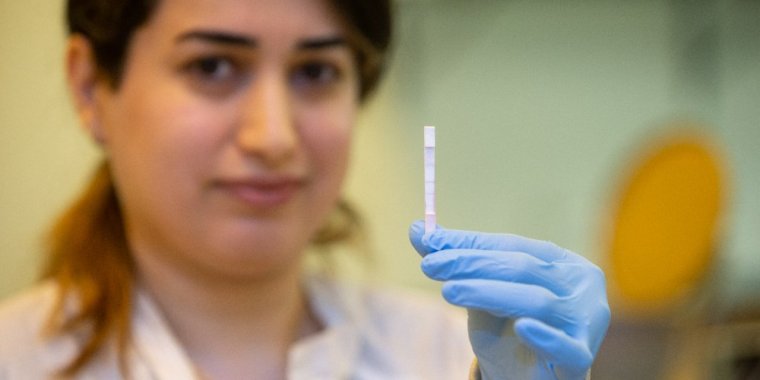| News / Science News |
Engineers create a simple test that can measure stress
Researchers at the University of Cincinnati developed a new technology that can easily test and measure common stress hormones in sweat, blood, urine or saliva. Eventually, they hope to turn it into a simple device that patients can use at home to monitor their health.

UC research assistant Shima Dalirirad holds up a sensor in UC professor Andrew Steckl's Nanoelectronics Laboratory. Photo: Andrew Higley/UC Creative Services
The test uses ultraviolet light to measure stress hormones in a drop of blood, sweat, urine or saliva. Stress biomarkers can be found in all of these fluids.
This project focuses on capillary-based paper microfluidics to fill the need for ultra-low-cost blood coagulation diagnostics. (National Science Foundation)
JUNE 16, 2019
YOU MAY ALSO LIKE

Wearable electronic components incorporated directly into fabrics have been developed by researchers at the University of Cambridge. The devices could be used for flexible circuits, healthcare monitoring, energy conversion, and other applications.

Scientists from the University of Granada have discovered that, although there were some variations in the eating habits of Megalithic communities over time, there were no significant social differences in the food types or the proportion of proteins consumed.

New development has the potential to create a lithium-ion battery that can charge in a matter of minutes and improve high capacity battery performance for electric vehicles.

A new research says that the dietary cholesterol in eggs is associated with a heightened risk of cardiovascular disease and early death — even though plenty of nutrition experts, consider eggs part of a healthy diet.

A team of scientists used liquid metal and a liquid electrolyte to convert gaseous CO2 into a solid, coal-like substance, a breakthrough that could change the ways carbon is removed from the atmosphere and permanently stored.
